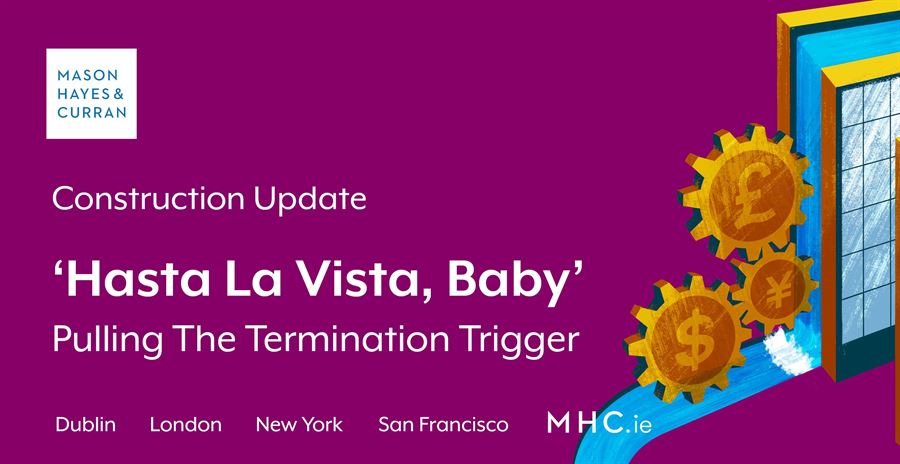
The RIAI forms of building agreement contains a two-step process for determining the Contractor’s employment in clause 33(a) where the Contractor is in default.
Step 1: Architect issues a notice of default
The Architect is required to issue a notice of default to the Contractor, specifying any of the following defaults:
-
Without reasonable cause suspends the Works before completion
-
Failure to proceed with the Works with reasonable diligence
-
Neglects to comply with a notice in writing from the Architect appointed under the contract, or
-
Fails to execute the Works in accordance with the contract or, in the opinion of the Architect, is in serious breach of its obligations
Step 2: Employer issues notice of termination of the Contractor’s employment
If the default continues for 10 working days after the Architect’s notice, the Employer may, without prejudice to any other rights or remedies, terminate the Contractor’s employment.
Think before you act
Exercising a right of termination is a significant step and should not be taken without due consideration of all of the relevant issues, risks and consequences, including the effects that any termination may have on the Employer’s broader commercial objectives, warranties package, claims under a performance bond, obligations to any lenders, obligations to third parties and sub-contractor arrangements. Key points to note:
-
All notices issued under 33(a) must be issued strictly in accordance with the contract requirements.
-
There are two limbs to the defaults in clause 33(a)(iv), each can operate independently of the other. In the first, the Contractor shall have failed “to execute the Works in accordance with the Contract”. There is no qualitative or materiality threshold of default specified in this limb. The second limb however requires the Architect to form an opinion that the Contractor has committed a “serious breach” of its obligations. This is the only limb that specifically requires the Architect to form an opinion in relation to seriousness of default.
-
Service by the Employer of the notice does not terminate the contract – it terminates the Contractor’s employment only. This distinction is important.
-
Whether a default has occurred depends on the objective facts and circumstances. A careful legal and technical analysis may be required.
-
Any notice of default or termination notice will be void if it is given unreasonably or vexatiously or if the Employer is in serious breach. The Employer’s payment obligations should be carefully considered in the context of any entitlement to set-off. In addition, in the current climate, including details of default that pertain to COVID-19 should be carefully considered in this context.
Comment
In conclusion, employers need to exercise any entitlement to determine a contractor’s employment with caution. The procedure in the contract must be followed to the letter. Wrongful termination may be deemed to be in repudiatory breach of contract which can have significant consequences in terms of damages and there have been numerous examples of this in the Irish Courts in recent years. It is imperative that employers receive appropriate legal and technical input early on and that all of the consequences of termination are understood before an option to determine the contractor’s employment is effected.
For more information, contact a member of our Construction, Infrastructure & Utilities team.
The content of this article is provided for information purposes only and does not constitute legal or other advice.
Share this:






